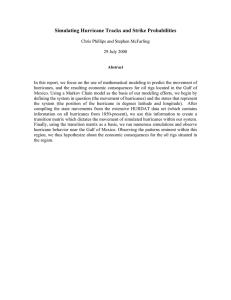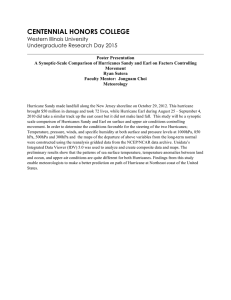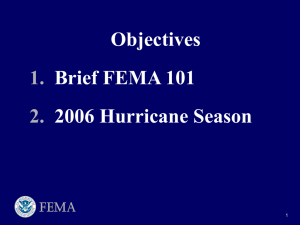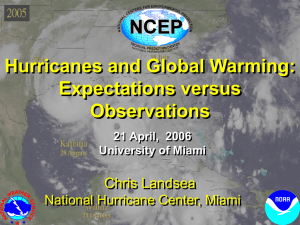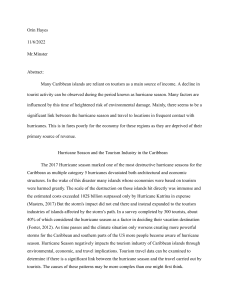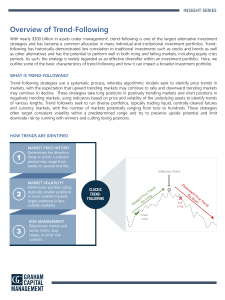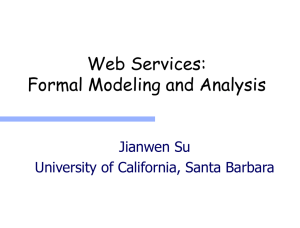NEURAL CAPITAL Newsletter September 2005
advertisement
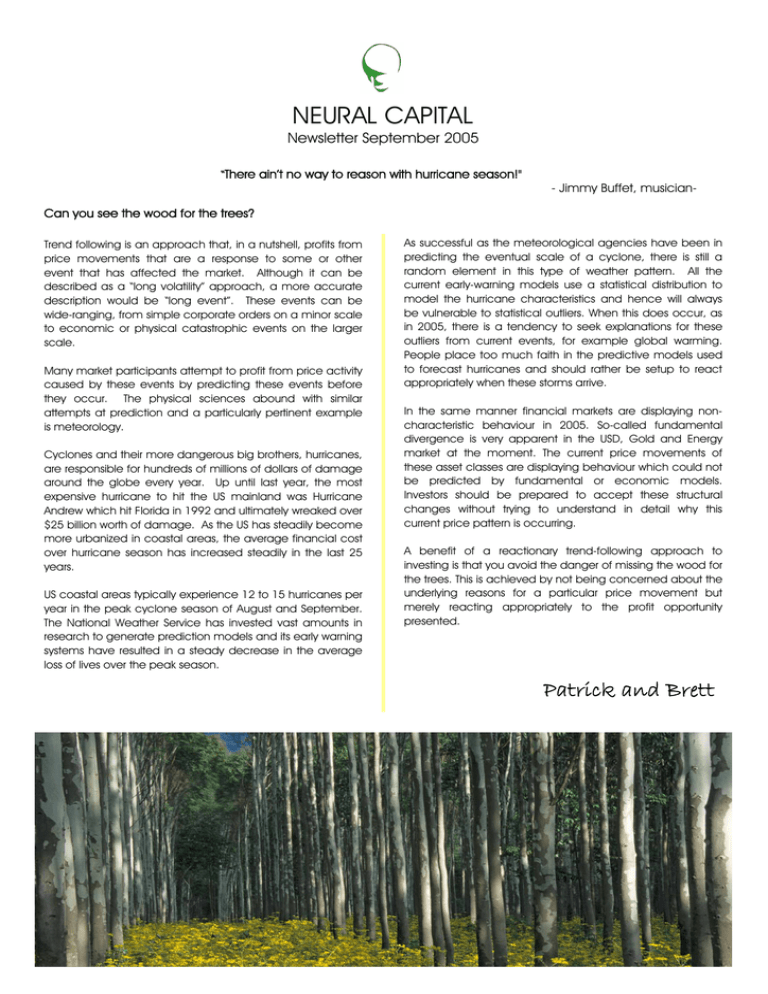
NEURAL CAPITAL Newsletter September 2005 “There ain’t no way to reason with hurricane season!" - Jimmy Buffet, musicianCan you see the wood for the trees? Trend following is an approach that, in a nutshell, profits from price movements that are a response to some or other event that has affected the market. Although it can be described as a “long volatility” approach, a more accurate description would be “long event”. These events can be wide-ranging, from simple corporate orders on a minor scale to economic or physical catastrophic events on the larger scale. Many market participants attempt to profit from price activity caused by these events by predicting these events before they occur. The physical sciences abound with similar attempts at prediction and a particularly pertinent example is meteorology. Cyclones and their more dangerous big brothers, hurricanes, are responsible for hundreds of millions of dollars of damage around the globe every year. Up until last year, the most expensive hurricane to hit the US mainland was Hurricane Andrew which hit Florida in 1992 and ultimately wreaked over $25 billion worth of damage. As the US has steadily become more urbanized in coastal areas, the average financial cost over hurricane season has increased steadily in the last 25 years. US coastal areas typically experience 12 to 15 hurricanes per year in the peak cyclone season of August and September. The National Weather Service has invested vast amounts in research to generate prediction models and its early warning systems have resulted in a steady decrease in the average loss of lives over the peak season. As successful as the meteorological agencies have been in predicting the eventual scale of a cyclone, there is still a random element in this type of weather pattern. All the current early-warning models use a statistical distribution to model the hurricane characteristics and hence will always be vulnerable to statistical outliers. When this does occur, as in 2005, there is a tendency to seek explanations for these outliers from current events, for example global warming. People place too much faith in the predictive models used to forecast hurricanes and should rather be setup to react appropriately when these storms arrive. In the same manner financial markets are displaying noncharacteristic behaviour in 2005. So-called fundamental divergence is very apparent in the USD, Gold and Energy market at the moment. The current price movements of these asset classes are displaying behaviour which could not be predicted by fundamental or economic models. Investors should be prepared to accept these structural changes without trying to understand in detail why this current price pattern is occurring. A benefit of a reactionary trend-following approach to investing is that you avoid the danger of missing the wood for the trees. This is achieved by not being concerned about the underlying reasons for a particular price movement but merely reacting appropriately to the profit opportunity presented. Patrick and Brett This newsletter marks the launch of the Neural Capital FX & IR Trading Fund which was registered in the Cayman Islands on the 13th September 2005. Hence forth, all returns reported on a monthly and quarterly basis will be the performance of this fund. Fund description The Neural Capital Foreign Exchange and Interest Rate Trading Fund is managed utilising a systematic trend-following system. The Fund is restricted to investments in G8 Spot Foreign Exchange markets and the most liquid exchange traded interest rate futures pertaining to the yield curves of these currencies. The trading system is three-phased and makes use of break-out channels to enter trades and trailing stop losses to exit. The leverage is a function of the historical volatility at the point of trade entry and is limited to a maximum of ten times the assigned capital. The investment portfolio consists of a combination of trades that are initiated on daily price movements as well as intra-day high-density tick data. The managers’ belief that assets’ price behaviour is fractal in nature (similar patterns repeat themselves at different scales) allows the system to thrive on trends in various time scales. 15.0% 1.40 1.35 1.30 10.0% 1.25 1.20 5.0% 1.15 1.10 1.05 0.0% 1.00 0.95 -5.0% 0.90 0.85 -10.0% 0.80 5 -0 ep S 5 -0 ug A 5 l-0 Ju 5 0 nJu 5 -0 ay M 5 -0 pr A 5 -0 ar M 5 -0 eb F 5 0 nJa 4 0 ce D 4 0 vo N 4 -0 ct O 4 -0 ep S 4 -0 ug A 4 l-0 Ju 4 0 nJu 4 -0 ay M Summary Statistics Return for September 2005 Rate of return 3.49% Gain:Loss Months Monthly Annual Year to date Rolling 12 month 1.83% 22.01% 16.97% 13.27% Monthly Annual 4.59% 15.90% Sharpe Ratio* Risk/Return 1.16 1.38 Maximum Time in drawdown -6.89% 52.94% Loss months Average Gain Months Average 5 -3.37% 12 4.00% S&P 500 CTA Index (Barclays) MSCI HedgeInvest -0.35 0.03 0.05 Standard Deviations Correlations Risk:Return Drawdown *risk-free rate: 90-day T-Bill Tel: +2711-883-5736 info@neuralcapital.co.za

